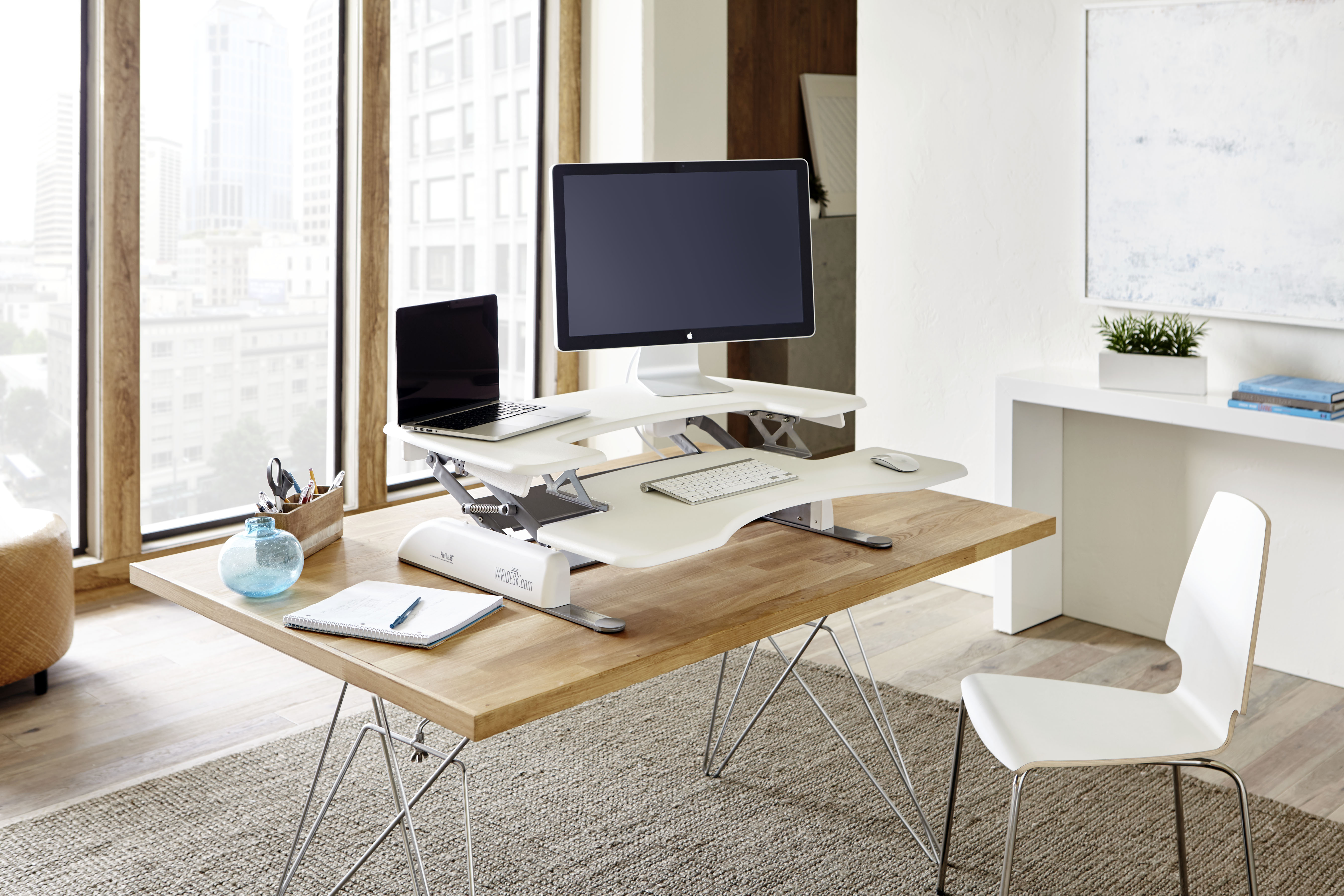Why serviced offices and flexible workspaces should invest in standing desks for their members
The International Journal of Environmental and Public Health recently published the results of Texas A&M’s School of Public Health study “Standing Up for Learning: A Pilot Investigation on the Neurocognitive Benefits of Stand-Biased School Desks”.
The abstract states that, “the purpose of this pilot study was to determine the neurocognitive benefits, i.e., improvements in executive functioning and working memory, of stand-biased desks and explore any associated changes in frontal brain function.” Yet, even though the study was conducted on freshmen year students, the findings can also have important implications for the business world and workers.
Standing desks are no new thing. In fact, they’ve been a hot topic for some time now, with various arguments defending the use of them, as well as some that argue that there are some ‘dangers’ in using standing desks.
Still, it appears to be that lovers of standing desks might’ve been right all along. The study’s findings are a breakthrough, as they provide “the first preliminary evidence on the neurocognitive benefits of standing desks, which to date have focused largely on energy expenditure.”
We spoke with Jason McCann, CEO of VARIDESK, to discuss the results of this study and how he believes it’ll influence the use of standing desks in the business world.
“We’ve all heard the phrase “thinking on your feet,” and Texas A&M just proved it’s true. Their study found that students using standing desks showed an increase in brain activity in the pre-frontal cortex. That means that both their problem solving skills and working memory improved. It’s pretty amazing!”
So what does this mean for workers?
Basically, that investing in an adjustable standing desk is good idea after all. Here’s why:
Significant improvements in executive functions
This means better problem solving abilities, better attention and focus, improved time management, improved memorization, better ability at prioritizing tasks, and better organization. In turn, this leads to the possibility of workers being more efficient and productive during work hours.
Improved neurocognitive function
Enhanced working memory and learning capabilities. In business learning and memory are key factors, as professionals are constantly exposed to situations in which they need to memorize, remember, and/or learn new names, projects, systems, to-dos, tasks, etc. Improved neurocognitive functions means that even when distracted (or multitasking) workers can potentially better remember and learn how to carry out a particular task.
Boosts in brain activity (due to enhanced blood flow)
Boosts in brain activity can lead to creativity and innovation, therefore workers can discover new ways to approach tasks, projects, problems, as well as develop new ideas and concepts that can benefit their line of work.
The findings are not conclusive and Jason believes that more research needs to be done. However, he does point out that this type of research confirms what VARIDESK customers say: “that people feel better when they have the option to sit and stand throughout the day.”
“I think we’re at the beginning of an active office revolution where employees and employers alike recognize the health, wellness, and productivity benefits of a less sedentary work environment.”
So, does this mean that we’re likely to see more standing desks in the upcoming future?
Maybe.
For Jason, the challenges that standing desks face remain, for the most part, the same as when they first became popular; the same challenges that brought VARIDESK to life.
“We found most sit/stand desks were both expensive and hard to assemble, or DIY hacks people pieced together. With VARIDESK we wanted to provide a simple solution that shipped fully assembled at an affordable price.”
VARIDESK is only one of plenty of standing desk options out there; and the increase of companies dedicated to producing and selling product hints at the fact that they are in demand. With studies like the one published in the International Journal of Environmental and Public Health, we expect to see a rise in the number of people trying out standing desks in the office.


 Dr. Gleb Tsipursky – The Office Whisperer
Dr. Gleb Tsipursky – The Office Whisperer Nirit Cohen – WorkFutures
Nirit Cohen – WorkFutures Angela Howard – Culture Expert
Angela Howard – Culture Expert Drew Jones – Design & Innovation
Drew Jones – Design & Innovation Jonathan Price – CRE & Flex Expert
Jonathan Price – CRE & Flex Expert











